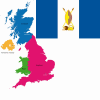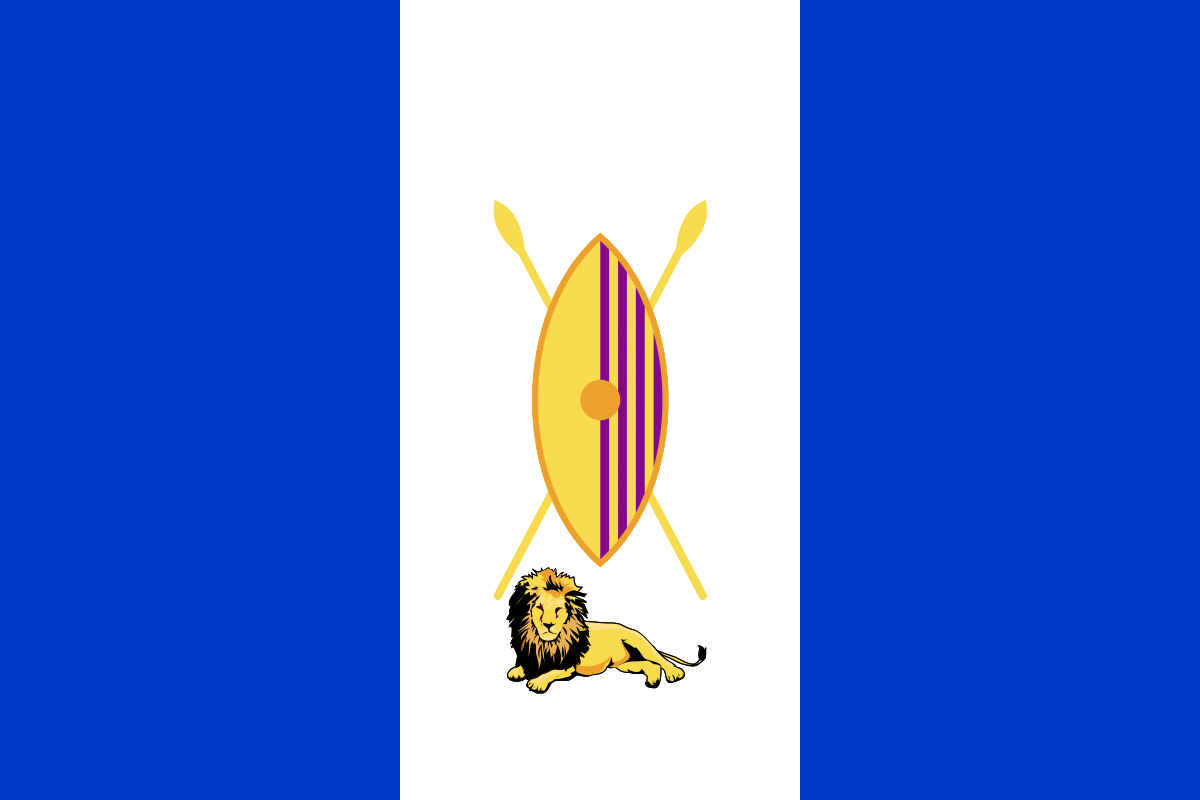The region known today as Buganda was known as Muwaawa before the 12th century, a name literary seem to mean a place that is sparsely populated. It is believed that these people come from Abyssinia through the rift valley and the mountains of Elgon.
These people were organized into groups that had a common ancestry and constituted the most important unit in Buganda's culture - the clan. The leader of each of these clans would be a chief and ruled a section of the territory. There were five original clans referred to as Banansangwa simply meaning the indigenous clans and they are: Ffumbe, Lugave, N?onge, Njaza and Nyonyi. These went on expanding to 52 clans by 1966.
Although these people spoke the same language and had the same culture, the clans were not so autonomous. There was no organized system of governance in the region but the clans were ruled over by The Bataka. There was no accepted general leader in the region but leadership passed on to whoever proved his might in the battle field. There used to be more than one leader in the same area. There some powerful leaders who are said to have established themselves for some periods of time before Kintu's arrival and they include the following: Sseguku, Buwumpya, Bukokoma, Bukulu, Bandi, Beene, Ggulu, Kyebagaba, Muyizzi, Bukuku, Bukadde-Magezi, Nakirembeka, Tonda, Maganda, Mukama, and Bemba. According to the most widely accepted version of history, Bemba was the acknowledged leader at the time of Kintu's arrival.
Muwaawa become Buganda during the reign of Ssekabaka Kintu the first when he took over from Bemba. By this time, the head of the Ffumbe clan was called Buganda Ntege Walusimbi who had leadership over other clans. Walusimbi had several children including Makubuya, Kisitu, Wasswa Winyi, and Kato Kintu. When Walusimbi died, his son Makubuya replaced him as ruler. On his death, Makubuya in turn was replaced by his brother Kisitu as ruler. During Kisitu's reign, a renegade prince called Bbemba came from the area of Kiziba in northern Tanzania today and established his camp at Naggalabi, Buddo from there he planned to fight Kisitu and replace him as ruler of Muwaawa. Bemba became so cruel and ruthless. When Bbemba attacked Kisitu, Kisitu became so intimidated and in his fear, he vowed to give his chair Ssemagulu to whoever would succeed in killing off Bemba whereby Ssemagulu was the symbol of authority. On hearing his brother's vow, Kintu gathered some followers from among his brothers and some of the various clans and attacked Bemba. Bemba was defeated in the ensuing battle and he was beheaded by one Nfudu of the Lugave clan. Nfudu quickly took Bbemba's head to Kintu, who in turn took it to Kisitu. On seeing Bbemba's head, Kisitu abdicated his throne in favor of Kintu with the words that "Kingship is earned in battle". Despite his abdication, Kisitu wanted to retain leadership of the Ffumbe clan, so he told Kintu to start his own clan. He also told Kintu that the kingdom should be renamed Buganda in memory of their common ancestor Buganda Ntege Walusimbi. Thus the royal clan came into existence by separated from the Ffumbe clan. Kintu established a new system of governance in alliance with the other clan leaders. Although there is no written literature, the information has passed on from generation to generation in oral form and the above version has been widely accepted as the most viable version.
However, there are other versions that talk about the origin of Buganda and amongst them is one where people believed that Bbemba and Kintu were related and that Kintu who was younger than Bbemba took over as leader. This did not go down well with Bbemba who was eldest which forced him to fight his cousin Kintu from the throne. Bbemba won the battle and Kintu ran away to the Ssese Islands from where he organized to come back and fight for his throne which was by then called Naggalabi.
When Bbemba took over power, he became so ruthless that people hated him so much. They even compared him to the dangerous cobra (Bbemba Musota) and wherever he would go to visit, he caused suffering to the people and even killed many of them. People became furious of him and when Kintu came back to fight him, all the people rallied behind him to fight Bbemba and this helped Kintu to win the battle.
This version goes a head to say that Kintu teamed up with all the different clans and his army was led by Mukiibi who was leader of the Lugave clan in the area. They won the battle and Bbemba was chased away. Kintu Kato took over the throne and its from here that some people mistake Kintu Kato as the first Muganda but this is not true. Kintu Kato could not have been the first Muganda when he fought Bbemba to take over power. He was a grandson to the first Kintu who came straight from heaven and he was married to Nambi Nantululu. When Kintu was coming back from Ssese Island, he took around about route via mountain Elgon. This he did because he wanted to take cover from his enemies so that he could attack Bbemba's men with ease. This is the reason why some people mistake Kintu to have come from the east of the country known today as Uganda. Kintu came to Buganda as a conquering hero with a big force that enabled him to establish himself as king. It's also believed that Bemba was a harsh and ruthless ruler. His subjects were already primed to rebel against him and indeed some prominent clan leaders joined Kintu's invading force. Key among these was Mukiibi, head of the Lugave clan, who was assigned command of the invading force. When Bemba was defeated in the battle, Kintu slept in Bemba's house as a sign of his victory. Bbemba had named his house Buganda and was located at Naggalabi Buddo. Thus Kintu took over leadership of Bemba's house Buganda and the name eventually came to mean all the territory that Kintu ruled. To this day, when a new king of Buganda is crowned, the ceremony takes place at Naggalabi, to recall Kintu's victory over Bemba.
Kintu found the region disorganized with only five clans. He reoganised them and merged those people he came with and the people he found in the region. Together they formed thirteen clans, organized themselves and formed the Buganda Kingdom. The five clans Kintu found in the region included among the following Ffumbe clan, Lugave clan, Ngeye clan, Nyonyi Nyange clan and the Njaza clan and they are referred to as "Ebika Binansangwa". Kitnu organized the people and called for a general meeting for all the clan leaders who met at Magonga in Busujju on Nnono hill and formed a united government with Kintu as their leader. This meeting was of great historic significance for it was at this meeting that Buganda's form of governance, and the relationship between the clans and the King was formally agreed upon. The agreement was not written down but it constituted an understanding between the clans that has been followed since then. In essence it set down Buganda's Constitution.
The following are some of the principal attendants who were at the meeting:
1. Bukulu, from Ssese, who chaired the meeting
2. Kato Kintu, who became King
3. Mukiibi Ndugwa, of the Lugave clan, whose son Kakulukuku was the first Katikkiro of Buganda
4. Kisolo, of the Ngonge clan, who also became a Katikkiro of Buganda
5. Kyaddondo, of the Nvuma clan who was appointed Ssaabaddu
6. Kayimbyobutezi, of the Njaza clan
7. Mwanje, of the Ngo clan
8. Balasi,
9. Kagobe, of the Ffumbe clan
10.Kayimbyokutega, from Kyaggwe and of the Mpeewo clan
11. Kiwutta Kyasooka, of the Mbogo clan
12. Kyeya Mutesaasira, of the Ngo clan
13. Nnyininsiko, of the Njovu clan
14. Bakazirwendo Ssemmandwa, of the Ngeye clan
15. Kakooto Mbaziira, of the Nnyonyi clan, from Bulimo in Kyaggwe county
16. Nsereko Namwama, of the Kkobe clan
17. Nsumba, of the Mbogo clan
18. Kisenge, of the Nnyonyi clan, from Mirembe in Kyaggwe county
19. Kyeyune, of the Nnyonyi clan, from Mirembe in Kyaggwe county
20. Mubiru, of the Mmamba clan, from Bumogera
21. Mutasingwa, of the Mbwa clan
After the meeting, Bukulu returned to the Ssese Islands. On completing his victory, Kintu established his palace at Nnono. It is here that he appointed his first government and awarded chieftaincies to his prominent followers. For this reason, Nnono is one of the most important cultural and historical sites in Buganda.
A Fetich doctor (Omulubaale) who was keeping the Naggalabi which was the traditional name for throne gave one stick (Akati Kamu) to Kintu and told him to break it into pieces which Kintu did at once. Then the Fetich put together nine sticks to make a bundle (Kaganda) and even prepared more others to make many bundles (Buganda) and told Kintu to break then like he had done with the one stick. Kintu failed to break the bundles with ease as it had been with one stick and therefore the Mulubaale explained to him that it was very easy to break one stick but it was very difficult to break the bundles (Obuganda) and that he should rule his people in BUGANDA and not in single STICKS. Therefore, it's from here that the name Buganda was adopted and Muwaawa dropped. Every one would refer to Kintu's region of rule as "Obuganda Bwa Kintu". When the kingdom was formed and given the name Buganda, the people in the Kingdom also became to be called Baganda for many and Muganda for Singular, their language Luganda and their culture Kiganda. They loved one another, spoke the same language and were never jealousy of each other.
Other theories state that Rukidi's brother Kato was called Kimera rather than Kintu. According to this school of thought, Kintu was merely a mythical figure and Kimera is the one who established the royal dynasty of Buganda. The Baganda strenuously resist this theory, and instead assert that Kimera was a grandson of Kintu. Kimera is counted as the third king in the dynasty, rather than its founder. More will be said about Kimera later.


